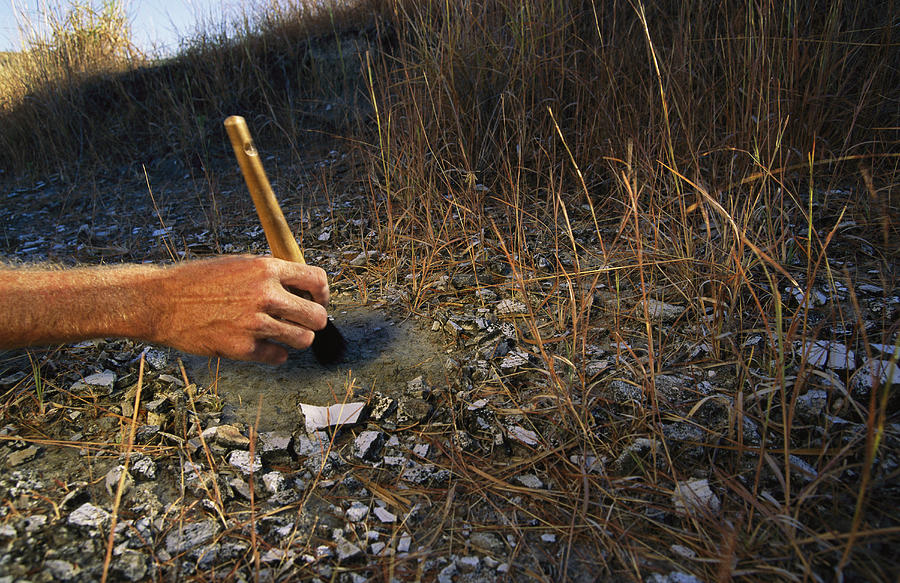Before I went on our
geological field studies trip, I thought that by some strange coincidence,
paleontologists would just be walking along a random plot of dirt and find T.
Rex skulls and bones poking out of the ground, kinda like this 60’s
paleontologist guy below.
How wrong I was! I had no idea how much work
and effort a paleontologist puts into finding dinosaur fossils. I found the
whole excavation process very fascinating, and so that’s what I will teach you
about.
Before
a paleontologist even begins digging, he has to survey the area he’s working
in, and see if anything promising can be found. Fossils are found in
sedimentary rock layers, and the layer we did our work in was the Wahweap
Formation. A paleontologist surveys and prospects for fossils while hiking
along the bases of hills and such. Fragments of fossils erode out of the ground
and tumble downhill, so if any fragments are found at the base of a hill, you
search up the hill to find more!
After
identifying what has been found (if anything) and if it was actually a fossil,
the paleontologist has to decide if it would be worth time and resources to
pursue an attempt to excavate any fossils from the ground. On public land,
permits must be obtained from the appropriate agency, such as the BLM or the
Forest Service, before an excavation can begin. Once a permit is acquired, the
paleontologist heads out with an excavation team and begins work. It involves a
bunch of digging with shovels and picks until the bone layer is found.
When
the bone layer is found, the paleontologist will use only small hand tools and
brushes to carefully isolate fossils.
Once
the top of the fossil is exposed, hardener is put on the fossil, and then the
fossil gets jacketed. The jacket involves lots of wet paper towels and strips
of burlap soaked in a liberal amount of Plaster. The jacket sits until it is
firm and solid. However, this is only the top of the jacket. Now the
paleontologist digs under the fossil and layer of dirt and applies more
jacketing material. When the bottom is solid enough to hold the jacket in
place, the jacket is flipped over and brought out of the dig site to the lab. Pictured
below is a large jacket being removed by an excavation team.
This
is the process a paleontologist uses to excavate a fossil, and it’s totally not
what most people think happens when fossils are found. I was glad I had the
opportunity to go and learn about paleontology.











